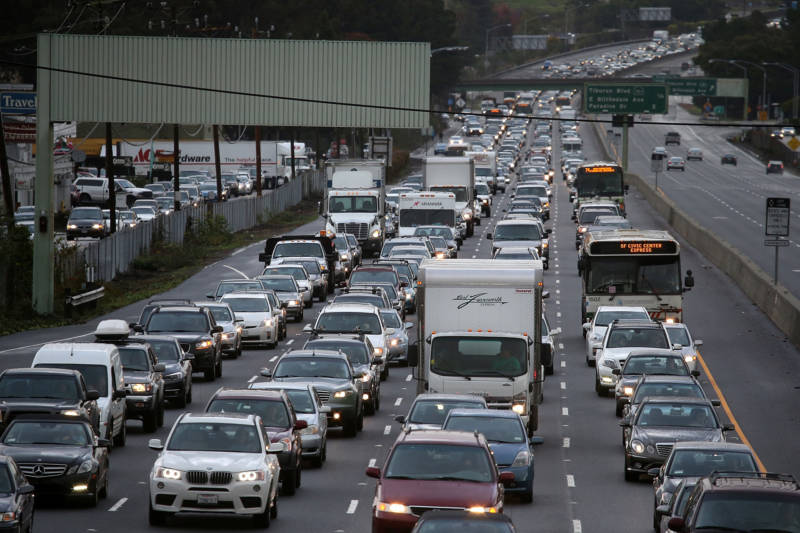“At the end of the day, we don’t think that there is a net loss here,” said California Air Resources Board Chair Mary Nichols. “In fact, we think it’s an important signal of the momentum, willingness, and the recognition of the companies that this is the path that they that they need to be on.”
Last month, seventeen automakers wrote to the EPA and to Newsom to urge both sides to restart negotiations. They suggested that EPA adopt a standard halfway between California’s desired one and its proposal to freeze at current levels. “We strongly believe the best path to preserve good auto jobs and keep new vehicles affordable for more Americans is a final rule supported by all parties — including California,” the letter said.
Newsom said he expected other companies to sign on to the deal, but it wasn’t immediately clear that they would.
“We are driving toward a future of zero crashes, zero emissions, and zero congestion,” said Patrick Morrissey, a spokesman for General Motors Co. “As we have stated, the pathway includes continuously improving fuel economy and our commitment to an all-electric future. Our focus remains on working with all parties on a deal that would involve a 50-state solution and a national electric vehicle program.”
“We have, and continue to pursue an outcome supported by the auto industry at large, the Federal government and the State of California,” said Karen Nielsen, a spokeswoman for Toyota. “We believe a [national] approach is optimal for the consumer, regulators and the industry as it simplifies regulations and reduces complexity and cost, which are critical to ensuring future standards can be met.”
The deal is national for the companies participating, says Severin Borenstein, an economist at UC Berkeley’s Energy Institute at Haas Business School, who appeared on KQED’s Forum. But the Trump administration immediately dismissed the agreement, and federal officials said they would continue work on a national standard.
Federal EPA spokesman Michael Abboud said several times on Thursday that the deal is a “PR stunt” that wouldn’t change anything or provide certainty to consumers.
The National Highway Traffic Safety Administration says that they are continuing to work with EPA toward a federal rule, likely after Labor Day.
Last year, researchers from several institutions — including University of California, Massachusetts Institute of Technology, and Yale — analyzed the federal plan and found that it had “fundamental flaws and inconsistencies” and is “misleading.”
California is able to set its own stricter tailpipe emission standards under authority of the Clean Air Act; the federal government issued the state a waiver to do so, and over a dozen states have since followed suit. Revoking the waiver would require an act of Congress, which is unlikely.
“I think there is a larger goal that the Trump administration has, which is they want to eliminate California’s waiver that allows it to promulgate its own environmental standards,” Borenstein said to KQED’s Michael Krasny. “They don’t like that in any area.”
Simon Mui, a senior scientist with the Natural Resources Defense Council, called the deal a recognition of state authority. “If they believed the states didn’t have the authority in the first place, why would they be reaching an agreement?” he said. “This is really the automakers realizing that Trump is not going to solve their problems, and California trying to bring a bit more sanity to the regulatory chaos created by trying to roll back the rules.”
California officials say they will continue to enforce state regulations and challenge the Trump Administration in the courts. And Newsom says that he expects more manufacturers to sign on to the standards.
“The fact remains these companies are committed to California’s standards,” Newsom said. “Regardless of what the EPA does, I will continue to assert that California has the right to establish them, and they will manufacture to those standards.”
